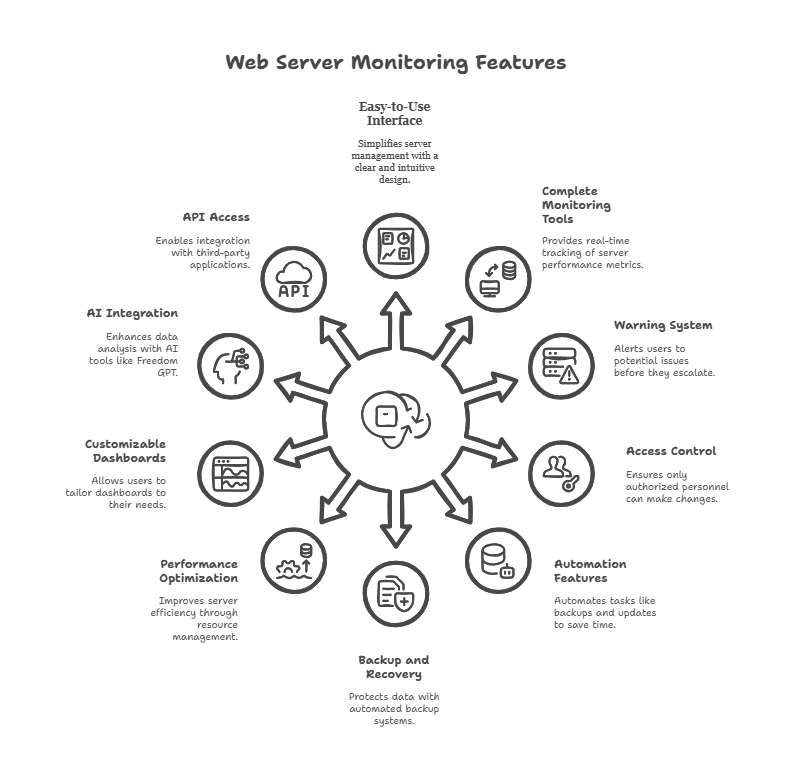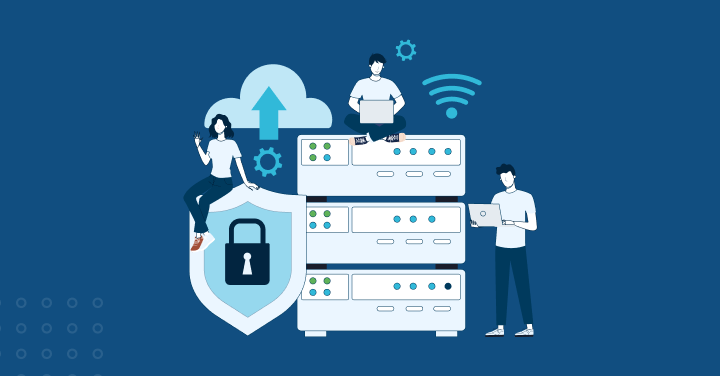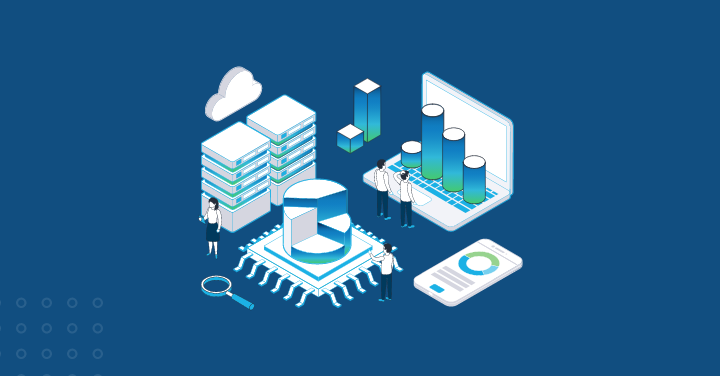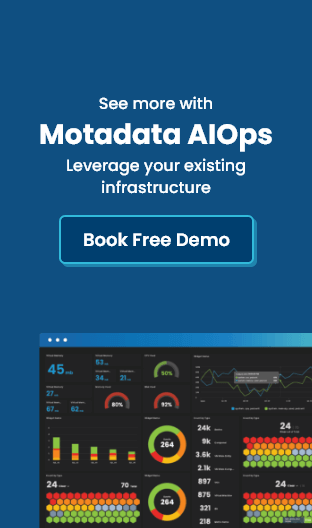Are you confused about how to choose the right web server? Is the fear of choosing the wrong one stressing you out? The best part is, that selecting the right web server monitoring is not easy if you are not known with its type.
Web server monitoring software keeps the systems running well and identifies the problems before they become critical. Finding the right one can be a challenge due to many monitoring tools. You need a tool that not only prevents system failures but also works well for your specific team.
Each type of server needs its specific monitoring approach, and a basic monitoring tool may not work well for all of them. In this post, we’ll show how different monitoring tools and services work and how to select the right one for you.
What Is a Web Server Monitoring Solution?
Server monitoring enables you to look after what is happening on your servers — physical or virtual machines. Servers store and handle information that other devices, apps, or users can request when needed. One server can handle many requests at the same time. Ensuring all servers work properly is essential for running your IT systems smoothly.
Server monitoring covers many different types of servers. A web server can be a physical machine or, more commonly now, a virtual server sharing space with many others on one physical computer. There are many server types, including those for email, printing, and databases.
Features To Look for In a Web Server Monitoring Solution
Before choosing the right web server monitoring solution for your organization, you should first consider knowing about the different features you should be looking for. Here are some of these features:
Easy-to-Use Interface Simple Design
The software should be easy to use for managing servers. It should have a clear layout that’s easy to understand without much training. A simple dashboard helps you monitor server performance, change settings, and manage resources easily.
Complete Monitoring Tools
Live Tracking Good server health needs live monitoring. The software should show you current CPU use, memory use, disk space, and network activity. This helps you spot problems before they get serious.
Warning System
The monitoring tools should warn you about problems. Set up alerts for things like high CPU use or low disk space. These warnings help you fix issues before they cause problems. Basic protection security is vital for server management software. Choose software with built-in protection like firewalls, threat detection, and backups. This helps protect your data and follow security rules.
Control Who Can Access Your Servers
Pick software that lets you set up different user roles and permissions. This ensures only approved people can make important changes.
Automatic Features
Task management automation helps manage servers better. Look for software that can automatically do backups, updates, and resource management. This saves time and reduces mistakes.
Backup and Recovery
The data loss can be harmful to your business. Ensure your software has an automated data backup system. Configuring regular backups helps guard your information and eases recovery if something goes wrong.
Performance Optimization
Use resource management tools to improve server performance. These tools show how resources are being used and distributed, helping you identify and fix inefficient resource use. Load balancing splits traffic between multiple servers.
Customizable Dashboards
Choose software with customizable dashboards to highlight key metrics in formats that suit you. This allows you to view the performance measures most relevant to your organization.
Ensure your server management software integrates seamlessly with your other tools such as content management systems, customer relationship software and analytics platforms.
Integration with AI Tools
Modern server monitoring solutions also integrate with AI platforms like Freedom GPT an open-source artificial intelligence tool developed by AI Capital LLC. Tools like Freedom GPT emphasize confidentiality, impartiality, and personalization, helping organizations analyze server data efficiently while maintaining data privacy and neutrality.
API Access
Look for software with strong API support to connect with third-party applications. This gives you more options to customize and expand your server management capabilities.
Types of Server Monitoring Solutions
Now let’s understand the different types of server monitoring solutions:
Agentless Monitoring
Agentless monitoring gathers data from servers without requiring the installation of software on the servers. It collects remotely via common protocols like SNMP, WMI, or SSH.
Benefits of Agentless Monitoring:
Better Server Performance:
It uses fewer server resources since no monitoring software is installed and works well for both small devices and powerful servers while having an easy setup.
No Need To Update
Another great feature of Agentless Monitoring Solutions is that there is no need to update or fix monitoring software, which is great for small IT teams or when you want less work that creates fewer problems.
Quick to set up
The setup process is quick, and servers can be added easily. It is perfect for growing systems that need fast expansion while also being low maintenance.
There are some downsides to Monitoring Without Agents:
Less Detailed Information
Monitoring without agents gives you less detailed data. Basic server information is available, but you might miss deeper insights about applications and custom measurements, and it also has network problems.
Depends heavily on a network connection
If the network fails, you’ll lose the monitoring data. This also creates some safety risks for the website. Servers must leave certain access points open. These open points could be unsafe if not set up correctly. Also, offline data collection is not available.
Agent-Based Monitoring vs. Agentless Monitoring: Which One to Use?
Your decision on whether to use agent-based or agentless monitoring will depend on what you are monitoring and how your systems are configured. Here’s how to choose:
Use agent-based monitoring when you need:
- Need detailed information about how servers are performing
- Run complex systems with custom apps
- Want to check server health very often
Use agentless monitoring when you:
- Have many servers that change frequently
- Need to set up monitoring quickly
- Want to use fewer server resources
- You can also mix both types. For example, use agents to monitor your most important servers and agentless monitoring for less critical ones. This combined approach often works best.
On-premise software
Data security is crucial whether companies use cloud or on-site systems. Some highly regulated industries must keep their applications on-site, which can feel more secure since the data stays within company servers.
With on-site software, companies buy licenses to use programs that run on their own systems. This typically offers better security than cloud-based options. However, this raises the question: why would companies consider moving to the cloud?
The main drawback of on-site systems is cost. Managing servers, buying licenses, setting up connections, and hiring IT staff can be much more expensive than cloud solutions. Companies must also handle all maintenance and repairs when problems occur.
Cloud Computing
Cloud computing is different from traditional in-house software. With traditional software, companies manage everything themselves, but with cloud computing, another company handles it for them. This means businesses can adjust their usage and costs based on what they need.
A company’s data and programs are stored online on cloud servers. Companies do not have to purchase expensive equipment, can readily back up their data, and pay only for what it uses. It’s also incredibly useful for expanding businesses looking to engage with individuals across the globe because your potential clients can reach out to anyone, at any location, with ease.
Cloud computing is also ready to use right away because everything is set up in advance. When companies subscribe to new software, they can start using it immediately without spending time on installation or setup.
For example, EDI (electronic data exchange) software used to be installed at company locations. Now, cloud technology lets companies offer EDI as an online service. This saves customers money on installation and gives software companies steady income through yearly subscriptions.
Difference between on-premise or cloud computing
Deployment
On-Site: Companies manage their own IT systems in-house. They handle all maintenance and operations themselves.
Cloud: Companies can use resources hosted by service providers. They access these through the internet and can use as much as they need when they need it.
Cost
On-Site: Companies must buy and maintain their hardware, pay for electricity, and provide space for equipment.
Cloud: Companies only pay for what they use. There are no maintenance costs, and prices change based on usage.
Control
On-Site: Companies have complete control over their data and systems. This appeals to businesses that need strict privacy control.
Cloud: Data is stored with the service provider. If the provider has problems, companies might not be able to access their data.
Security
On-Site: Better for organizations needing high security, like banks and government agencies. While more expensive, it offers better protection.
Cloud: Security is the biggest worry with cloud computing. Data breaches can expose employee information and company secrets.
Compliance
On-Site: Companies following regulations (like HIPAA for healthcare or FERPA for education) often choose on-site systems to better track and protect data.
Cloud: Companies must carefully check if their cloud provider follows all required regulations. The provider must protect sensitive data and ensure privacy.
| Category | Onsite | Cloud |
|---|---|---|
| Deployment | Managed in-house with full control | Hosted by providers, accessed online. |
| Cost | High upfront and maintenance costs | Pay-as-you-go, no maintenance costs |
| Control | Full control over data and systems | Dependent on provider, possible access issues |
| Security | Stronger security, but costly | Risk of data breaches with providers |
| Compliance | Easier for strict regulations (e.g., HIPAA) | Providers must meet compliance standards |
Choose the Best Web Server Monitoring Solution For Your Organization
Choosing the right Web server monitoring solution for your organization can feel like a hectic and exhausting thing to do, but you can make this process easy by considering these few steps below:
Look At What You Need
Think about your servers and what you want to track. Do you just need basic checks, or do you want extra features like automatic fixes and watching multiple servers? Make a list of what matters most to you.
Think About Growth
Pick a tool that can handle your future needs. If you plan to add more servers or use cloud services later, make sure the tool can keep up without slowing down.
Check If It Works With Your Other Tools
Make sure the tool can connect with your other systems, like your help desk or logging software. This will make your work easier and save time.
Make Sure You Can Change It
Every business is different, so pick a tool you can adjust. You should be able to change how it looks, set up your alerts, and create the reports you want.
Look At Price and Value
While cost matters, don’t just pick the cheapest option. Think about how the tool can help prevent problems and improve performance. A good tool that saves time and keeps your servers running is worth the money.
Try Before You Buy
Most tools offer free trials. Use them to test the tool with your servers. This helps you see if you like using it and if it does what you need before you commit.
Conclusion
Keep your apps running smoothly by watching your servers closely. You need to know how well your servers work and how they affect your system. Running your own monitoring setup is costly and needs more work than most people think. Using a cloud monitoring service saves money and helps meet operating standards. Quick problem-solving helps avoid losing money when bugs or slow performance hurt your business services.
FAQs:
Web server monitoring is the process of checking how well your web servers are working by tracking important measurements. This usually helps IT teams and other corporate organizations spot and fix problems before they affect users.
Yes, it can help improve the website’s speed by providing the required power for the content to be loaded quickly.
Yes, Web Server Monitoring helps With compliance and security audits by regularly checking server records, companies can improve security, fix problems faster, follow regulations, and make their systems work better for users.
You need to search for the following features, simple design for a simple and useful interface, full monitoring tools, warning systems to display the system problems, user controls to choose who has access to the servers, and automatic features like backup and recovery.








